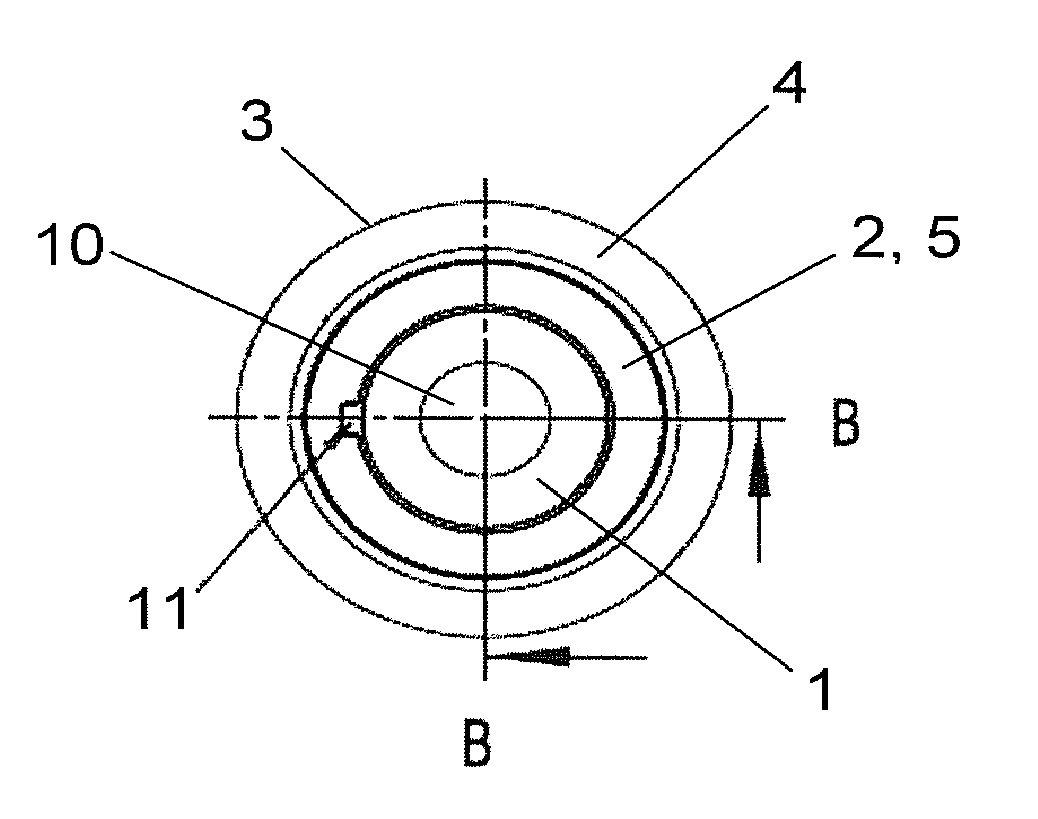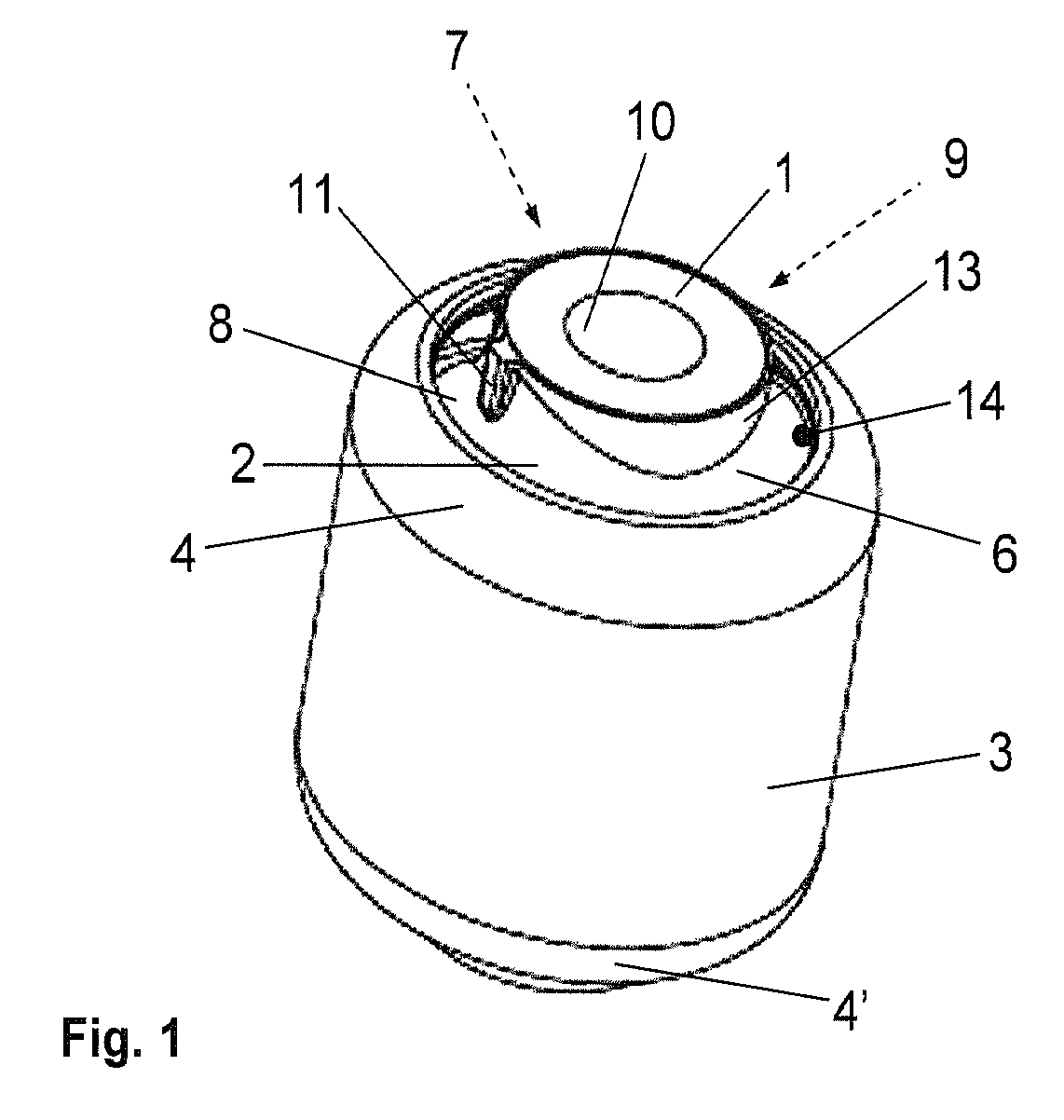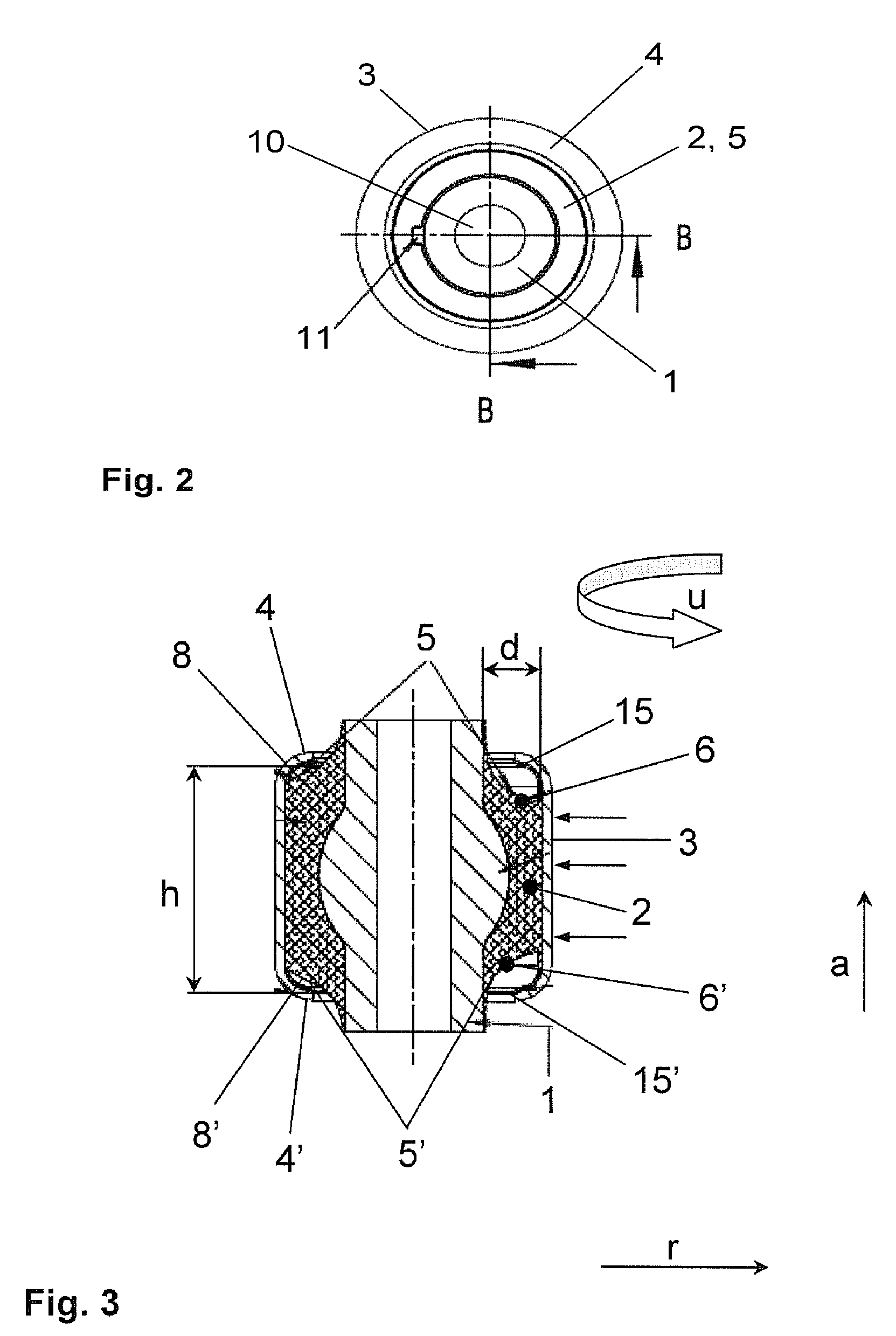Bush bearing with bearing body having an axial profile
a bush bearing and bearing body technology, applied in the direction of elastic bearings, bearing unit rigid support, shock absorbers, etc., can solve the problems of reducing the service life and stability of the bearing, and achieve the effect of avoiding adversely affecting its stability and service li
- Summary
- Abstract
- Description
- Claims
- Application Information
AI Technical Summary
Benefits of technology
Problems solved by technology
Method used
Image
Examples
Embodiment Construction
[0021]FIG. 1 shows a three-dimensional diagram of a possible embodiment of the bearing according to the invention. The bearing includes, as described above, the metallic inner part 1, the outer sleeve 3 concentrically surrounding the inner part 1, and the elastomer bearing body 2 arranged between the inner part 1 and the outer part 3. It will be assumed for the depicted bearing that its inner part 1 is, for example, a cold-extruded steel part which is concentrically surrounded by an outer sleeve 3 made of steel, wherein the elastomer bearing body 2 disposed between the inner part 1 and the outer sleeve 3 is adheringly connected with both the inner part 1 and the outer sleeve 3 by vulcanization. As described above, the inner part 1 and the outer sleeve 3 can also be made of other materials, whereby an adherent connection need not exist between the bearing body 2 and the outer sleeve 3. In any event, the outer sleeve is flanged on both sides by forming respective inwardly oriented fla...
PUM
 Login to View More
Login to View More Abstract
Description
Claims
Application Information
 Login to View More
Login to View More - R&D
- Intellectual Property
- Life Sciences
- Materials
- Tech Scout
- Unparalleled Data Quality
- Higher Quality Content
- 60% Fewer Hallucinations
Browse by: Latest US Patents, China's latest patents, Technical Efficacy Thesaurus, Application Domain, Technology Topic, Popular Technical Reports.
© 2025 PatSnap. All rights reserved.Legal|Privacy policy|Modern Slavery Act Transparency Statement|Sitemap|About US| Contact US: help@patsnap.com



